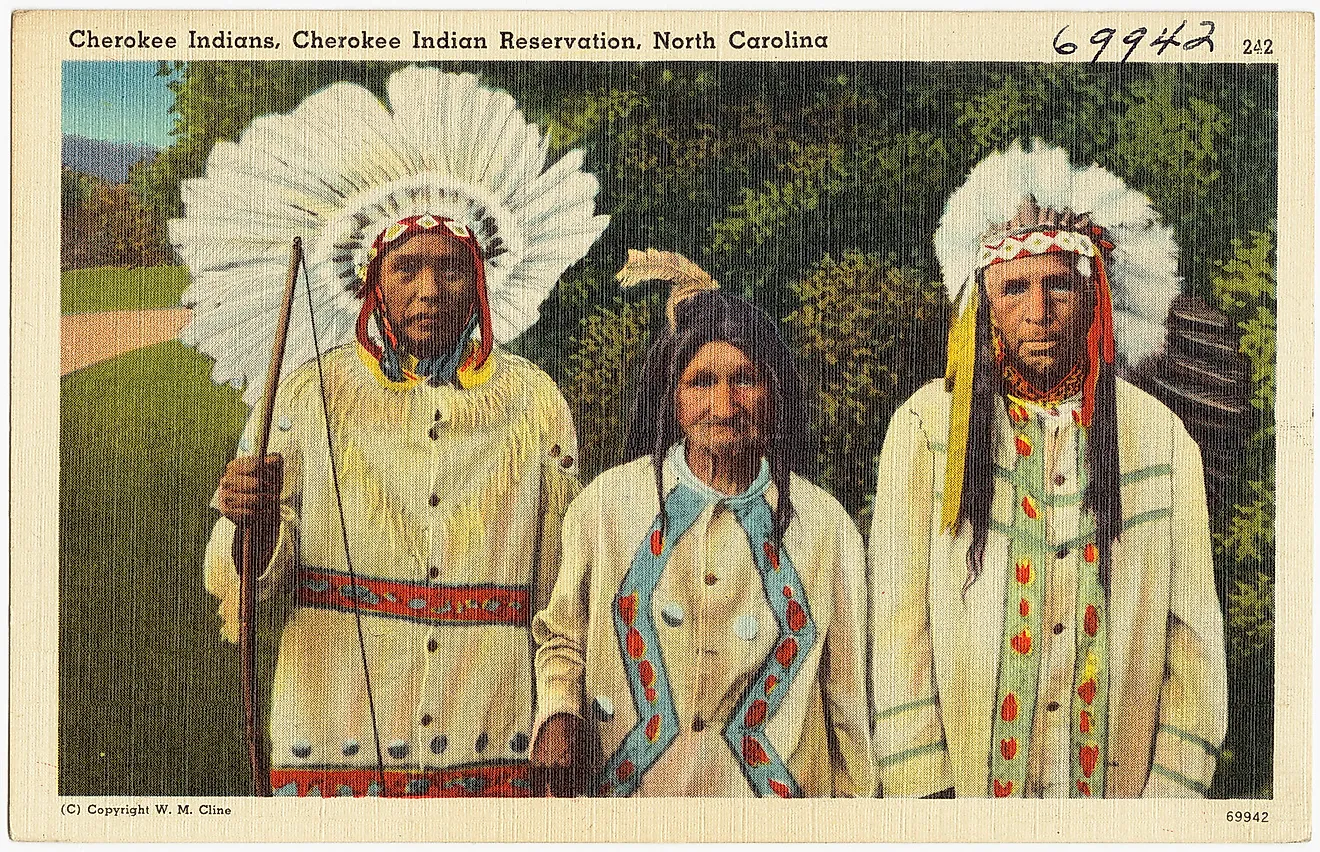Cherokee Nation: A Legacy of Resilience and Renewal
Cherokee Nation: A Legacy of Resilience and Renewal

The Cherokee Nation, a proud and resilient people with a rich history and vibrant culture, has endured countless trials and tribulations throughout its existence. From their ancestral lands in the Southeastern United States to their forced relocation on the Trail of Tears, the Cherokee have faced challenges that would have broken lesser peoples. Yet, they have persevered, adapting and evolving while steadfastly holding onto their traditions and identity.
Today, the Cherokee Nation stands as a testament to the strength and spirit of its people. Their reservation, located in northeastern Oklahoma, is a thriving community brimming with cultural pride and economic opportunities. It’s a place where the past intertwines with the present, where ancestral wisdom guides the future, and where the Cherokee language, once threatened with extinction, is being revitalized.
Related Articles: Cherokee Nation: A Legacy of Resilience and Renewal
- Unveiling the Enchanting Names of Native American Tribes in New Mexico
- Unveiling Florida's Native American Heritage: Discover the Tribes That Shaped Its History
- Unveil the Enchanting World of North Dakota's Native American Tribes
- Uncover the Largest Indian Reservations in Minnesota: A Journey of Discovery
- Unlock the Untold Histories: Discover the Indigenous Tribes That Shaped Texas
From Ancient Roots to Forced Displacement:
The Cherokee, known as the "People of the Mountain," have inhabited the Southeastern United States for centuries, their history deeply intertwined with the land. Their culture, rich in oral tradition, storytelling, and art, flourished in harmony with the natural world. They developed a unique syllabary, a writing system that allowed them to preserve their language and traditions.
However, the arrival of European settlers brought conflict and displacement. The Cherokee, initially seen as allies, soon found themselves targeted as their lands became coveted by the expanding United States. Forced assimilation policies, broken treaties, and the infamous Trail of Tears – a brutal forced relocation in the 1830s – resulted in the loss of their ancestral homelands and the deaths of thousands.
Rebuilding and Renewal in Oklahoma:
Despite the hardships they faced, the Cherokee persevered. They found a new home in Oklahoma, where they began rebuilding their lives and their communities. They established a new government, the Cherokee Nation, and worked tirelessly to preserve their culture and language.
The Cherokee Nation’s journey in Oklahoma wasn’t easy. They faced challenges like poverty, discrimination, and the loss of traditional ways of life. However, they met these challenges with determination and resilience. They developed a strong sense of community, supporting each other through education, healthcare, and economic development.
The Cherokee Nation Today: A Thriving Community:
Today, the Cherokee Nation is a thriving community with a vibrant economy, strong cultural institutions, and a commitment to self-determination. Their reservation is home to numerous businesses, a state-of-the-art healthcare system, and a thriving arts and cultural scene.

The Cherokee Nation is actively engaged in preserving its language and cultural traditions. They have established language immersion programs, cultural centers, and museums to ensure that the next generation inherits the rich legacy of their ancestors.
Exploring the Cherokee Nation: A Journey Through History and Culture:
Visiting the Cherokee Nation is a journey through history and culture. Here are some of the must-see attractions:
- The Cherokee Nation Museum: This world-class museum showcases the history, culture, and art of the Cherokee people. It features exhibits on the Trail of Tears, the Cherokee syllabary, and traditional crafts.
- The Cherokee Heritage Center: This living history museum offers visitors a glimpse into the Cherokee way of life. You can explore reconstructed Cherokee villages, watch traditional dances and ceremonies, and learn about Cherokee history and culture.
- The Cherokee National Archives: This repository houses a vast collection of documents, photographs, and artifacts that chronicle the Cherokee Nation’s history.
- The Cherokee Nation Businesses: The Cherokee Nation’s economic development arm, Cherokee Nation Businesses, is a major force in the Oklahoma economy. It operates a diverse range of businesses, including casinos, hotels, and technology companies.

Beyond the Reservation: The Cherokee Diaspora

The Cherokee Nation is not limited to its reservation in Oklahoma. The Cherokee diaspora stretches across the United States and beyond, with communities and individuals embracing their heritage and contributing to society in diverse ways.
Cherokee Language Revitalization:
One of the most significant efforts of the Cherokee Nation is the revitalization of their language. Once facing the threat of extinction, the Cherokee language is now being taught in schools, universities, and community centers.
The Cherokee Nation has developed innovative programs to promote language learning, including online courses, language immersion schools, and community language classes. They have also partnered with other organizations to create resources and materials to support language learners.
The Cherokee Nation: A Beacon of Resilience and Hope
The Cherokee Nation’s journey is a story of resilience, adaptation, and hope. From the devastating losses of the Trail of Tears to the triumphs of self-determination, the Cherokee people have demonstrated an unwavering commitment to their heritage and their future.
Their story serves as a reminder that even in the face of adversity, cultures can endure, languages can be revitalized, and traditions can be passed down through generations. The Cherokee Nation stands as a beacon of hope and inspiration, demonstrating the power of community, cultural pride, and the enduring spirit of a people.
FAQ about the Cherokee Nation
Q: Where is the Cherokee Nation located?
A: The Cherokee Nation reservation is located in northeastern Oklahoma.
Q: How many Cherokee people are there?
A: The Cherokee Nation is the largest federally recognized tribe in the United States, with over 380,000 enrolled citizens.
Q: What is the Cherokee language?
A: The Cherokee language is a unique language with its own writing system, the Cherokee syllabary, developed by Sequoyah in the early 19th century.
Q: What are some of the cultural traditions of the Cherokee people?
A: Cherokee culture is rich in oral tradition, storytelling, art, music, and dance. Some of their traditional crafts include pottery, basket weaving, and beadwork.
Q: What is the role of the Cherokee Nation government?
A: The Cherokee Nation government is responsible for governing the Cherokee Nation and providing services to its citizens. It has a democratically elected chief and council.
Q: How can I learn more about the Cherokee Nation?
A: You can visit the Cherokee Nation’s website, explore their museums and cultural centers, or attend events and festivals organized by the Cherokee Nation.
Q: How can I support the Cherokee Nation?
A: You can support the Cherokee Nation by visiting their businesses, participating in their cultural events, and donating to their organizations.
Q: What is the future of the Cherokee Nation?
A: The future of the Cherokee Nation is bright. They are committed to preserving their culture and language, strengthening their economy, and improving the lives of their citizens. They are a thriving community with a rich history and a promising future.

Closure
Thus, we hope this article has provided valuable insights into Cherokee Nation: A Legacy of Resilience and Renewal. We hope you find this article informative and beneficial. See you in our next article!

